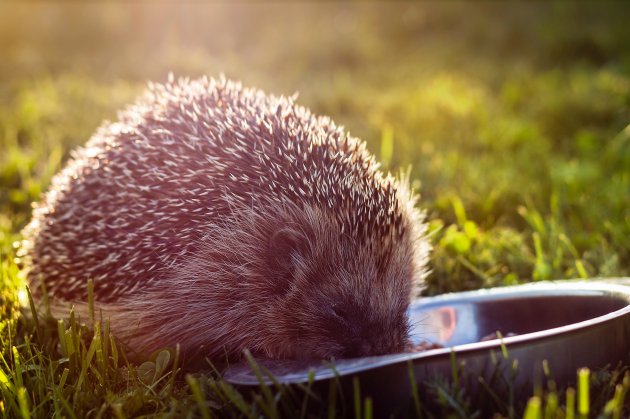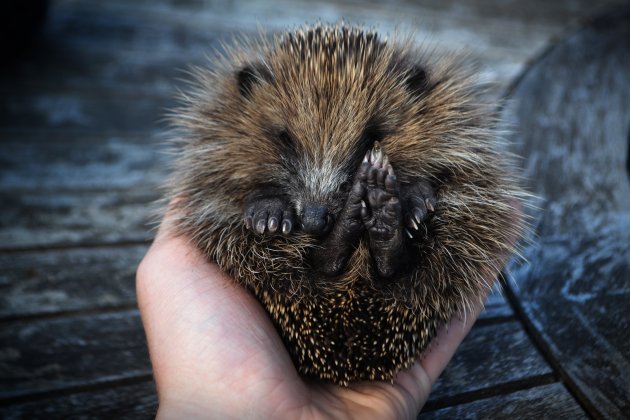Hedgehogs are becoming a popular choice as pets lately! And it's no wonder since they make wonderful pets; they are adorable and easy to take care of. We have spoken before of the pros and cons of having a hedgehog as a pet, in this article we’ll focus only on the joys of having a hedgehog as a pet.
Before we start, analyze your circumstances. Having a hedgehog as a pet will bring happiness to your life only if your circumstances and life routine are the correct ones.
Have in mind that owning a little hedgie as a pet can be illegal in many countries and states, so before jumping into becoming the owner of one, investigate if is legal in your area.

1. Hedgehogs are quiet
Dog owners, and at times cat owners, know what the word noise means. Fortunately, hedgehogs don’t bring that problem home. Other kinds of pets can bring you trouble with your neighbor, but hedgies are super quiet. You can enjoy having the company of a pet without complaints from outsiders. Also, if you are the type of person that prefers calm and quiet; little hedgies are just the right pet for you.
Hedgehogs do emit sounds of course. For example, they can purr, snort, squeak, snore, and even scream if scared or injured. Still, hedgehogs are quieter than most pets and rarely make any noise
2. They don’t stink!
The dream every momma has is for her child’s pet to be odorless. With a hedgehog you can’t go wrong. Other pets are quite smelly and need constant cleaning, but that is not the case with hedgehogs.
Hedgehogs don’t clean themselves or after themselves at all. The reason they are not smelly is because they don’t have scent glands, while other pets do. Therefore, they don’t have a strong body scent. A hedgehog’s cage and the pet itself can become somewhat smelly if the cage is rarely cleaned and the pet is scarcely or never bathed.
Even if you clean the hedgehog cage only once in a week, the presence of ammonia in their feces and urine is so little that it doesn’t have a strong smell. The smell of the feces depends on their diet; for example, worms make the feces smell stronger.
3. Allergic people welcome!
Allergic people can have a difficult time choosing a pet. After all, most of them produce allergens. Happily! We know hedgehogs happen to be hypoallergenic, meaning they rarely produce an allergic reaction at all.
Both human bodies and animals produce dander in their hair, fur or feathers. These microscopic flakes are the reason for allergic people’s distress. Hedgehogs produce very little dander; making them potential pets for allergic people.
Despite this, allergies produced by a hedgehog are not completely unheard of. If you suffer from severe allergies; keeping your hedgie and its cage clean can help you reduce or completely dissipate any discomfort related to allergies. Another valuable tip for allergic people is to make sure your hedgehog’s cage bedding is not the thing that is provoking allergies. Have this in mind and no discomfort will come between you and your hedgehog’s happiness.

4. They don’t require much space
If you live in a small apartment or share it with someone else, don’t worry, as hedgehogs don’t demand much space.
These little fellas weigh about 14 to 39 ounces and are 5 to 12 inches long from the tip of their head to the bottom of their tail, and their tail is only 1 or 2 inches long. These facts make the hedgie a pocket-size pet. Perfect for an apartment owner!
For the size of the hedgie's cage, Dr. Karen Shaw Becker recommends an enclosure that is a minimum of 6 by 6 feet. They can be kept in smaller containers, but the bigger the better.
5. Easy to meet diet
Forget expensive dietary requirements! Hedgehogs live on an easy to meet diet based on small insects, mealworms, fruits, and vegetables. Commercial “hedgehog food” is available in many pet stores; unfortunately, this food can make your hedgehog suffer from obesity.
If commercial hedgehog food is not available to you, cat food is a good substitute. Still, fresh food, insects, and fruits are the easiest and kindest to your hedgehog’s digestion process. Because of their insect preferred diet, hedgehogs are welcome in English gardens.
6. Hedgehogs are nocturnal
The fact that hedgehogs are nocturnal may sound like a heavy con for many people. Despite this, for the right person, it is just another pro.
Everybody has a different life routine, and like hedgehogs, some people are more active when the sun goes down.

7. Their quills don’t hurt
A hedgehog’s back is completely covered with tiny, strong and sharp (but not barbed) quills; these quills protect the animal in the wild. Gladly, these quills are not life-threatening at all. If you know how to hold your hedgehog with proper care you won’t get hurt.
A calm hedgehog will have its quills lying flat on its back. Unless you try to pet them contrary to the position of their quills, there’s no way of getting hurt. Have in mind that the hedgie’s quills position will strongly depend on the animal’s disposition. An angry or nervous hedgehog will roll into a tight and spiky ball with their quills standing up and pointing in all directions. To hold a nervous or scared hedgie, you can use a small towel till the animal calms down and relaxes a bit.
8. They are easy to take care of
Exotic pets have a history of being delicate, demanding, and difficult to take care of. Hedgehogs are not the case. To make an easy comparison; many dog breeds, cat breeds, parrots, and other kinds of pets, can get affected when left alone for too long. Hedgehogs are lonely guys; they prefer to be alone even in the wild. As a result, if you only have an hour of your time to dedicate to your pet every day, that is perfect for them.
The requirements for their cage are very simple, as it is almost like having a hamster at home (a very spiky hamster). Their cage does not need to be too big, but it needs to have a solid bottom to avoid injuries or fractures to their little paws. Given hedgies’ tendency to obesity when in captivity, an exercise wheel with a solid bottom is mandatory.
An easy to meet diet and annual mandatory trips to the vet complete the pack of the most fantastic pet ever.
Resources and further reading:
- Kate H Pellham. (2015). Hedgehogs: The Essential Guide to Ownership & Care for Your Pet. Retrieved from amazon.com
- Dawn Wrobel and Brown DVM, Susan A. (1997). The Hedgehog: An Owner's Guide to a Happy Healthy Pet. Retrieved from amazon.com
- National Geographic. Hedgehog